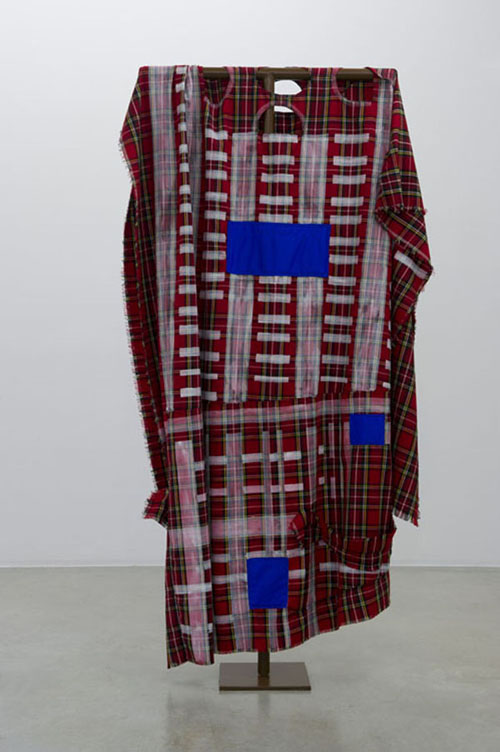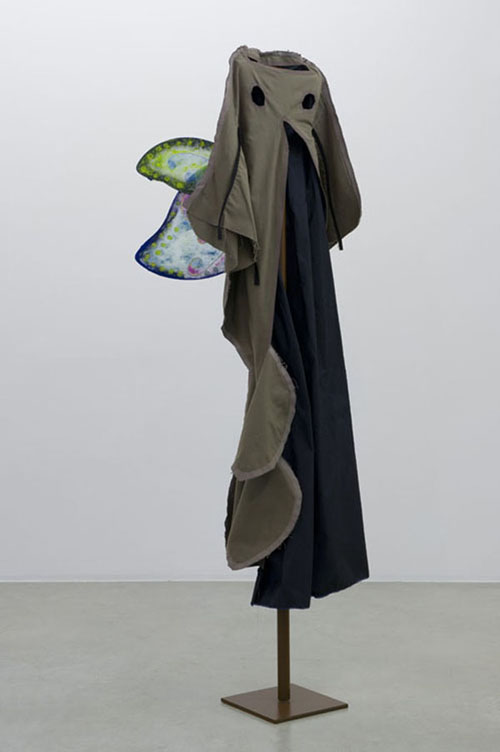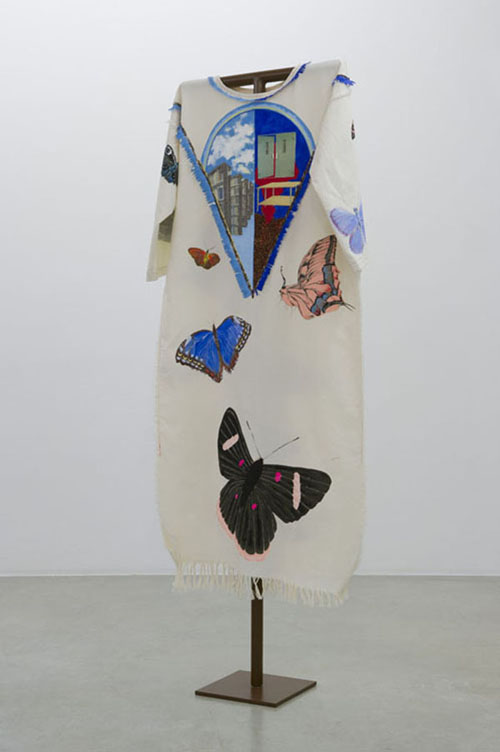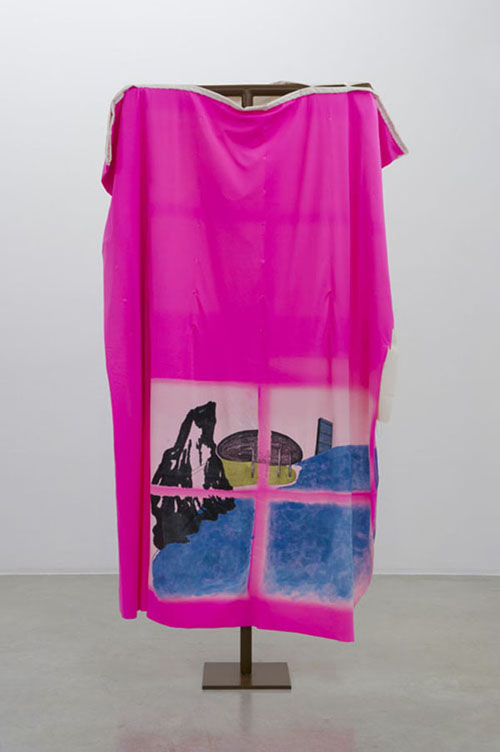
Papillon et Projection + eau + percée + envers
2 Parties / 2 Parts
C. 165 x 70 x 20 cm
Portant / Support : 173 x 70 cm
Collection CNAP / CNAP collection

Mannahatta
C. 170 x 175 cm
Portant / Support : 173 x 70 cm
Collection CNAP / CNAP collection

Grande robe de l’Ange de mer ocellé
C. 160 x 60 x 40 cm
Portant / Support : 173 x 30 cm

Le Rêve de la Halle Bibliothèque
C. 150 x 70 cm
Portant / Support : 173 x 50 cm
Collection privée / Private collection

The ERBayUN Dress
C. 160 x 90 cm
Portant / Support : 173 x 70 cm
Collection privée / Private collection

La Grande Serrure
173 x 60 x 25 cm
Techniques mixtes sur tissus, voile et denim, résine, nacre, métal peint / Mixed media on fabrics, veil and denim, resin, mother-of-pearl, painted metal
Collection Frac Poitou-Charentes
La Grande Serrure est composée de deux parties : une tunique en textiles mixtes (coton, denim etc) et un accessoire en toile peinte suspendu comme un sac à main représentant le bloc de serrure. Sur la tunique principale sont collés de faux post-it présentant des dessins, une cartographie imaginaire. L’ensemble est présenté sur un portant métallique.
La Grande Serrure is made up of two parts : a tunic in mixed textiles (cotton, denim, etc.) and a painted canvas accessory suspended like a handbag representing the lock block. On the main tunic are pasted false post-it with drawings, imaginary cartography. The set is presented on a metal rack.
Les Ghost Dresses s’inspirent des robes de culte portées lors du rituel amérindien de la Ghost dance auxquelles elles empruntent leur nom. L’espace de représentation de l’habit incarné par la robe s’appuie sur ce Support symbolique (à la fois vêtement, protection ou parure ornementée) bien qu’elle ne soit pas destinée à être portée. Son échelle varie en fonction des projets et souvenirs transmis par ces robes, et constituent autant de combinaisons d’habiter citant Le Manteau d’Etienne Martin (1962) comme celui d’un territoire exploratoire de la mémoire, ou une composition optique, texturelle, coloriste dans le mouvement sculptural des Parangolé de Hélio Oiticica.
Par exemple, Le Rêve de la Halle Bibliothèque (2011), s’inspire graphiquement d’une robe de Ghost Dance du Dakota (tribu amérindienne Sioux) du XIXè siècle photographiée à l’American Museum of Natural History de New York. Sur la tunique, l’extériorisation des mauvais rêves oppose nuit et jour, sous la forme de dessins stylisés et de signes invoquant un meilleur présage.
La Grande Serrure is made up of two parts : a tunic in mixed textiles (cotton, denim, etc.) and a painted canvas accessory suspended like a handbag representing the lock block. On the main tunic are pasted false post-it with drawings, imaginary cartography. The set is presented on a metal rack.
The Ghost Dresses are inspired by the cult’s dresses wore during the amerindians ritual of the Ghost dance. The representation space incarnated by the clothe is based on this symbolic support (at the same time clothing, protection or ornement) even if it is not wore. Quoting Etienne Martin’s Le Manteau (1962) -The Coat- they constitute as much combination to inhabit an explorative territory of the memory, or an optical composition, textural, colorist such as the sculptural mouvement of the Parangolé from Hélio Oiticica.
For example, Le Rêve de la Halle Bibliothèque - The Dream of the Halle Library-, is inspired graphically by a Dakota’s Ghost Dance dress (amerindians tribe of Sioux) from the XIX’s century photographed at the American Museum of Natural History of New York. On the dress, the exteriorization of bad dreams opposes night and day under the shape of stylized drawings and signs invoking a better presage.